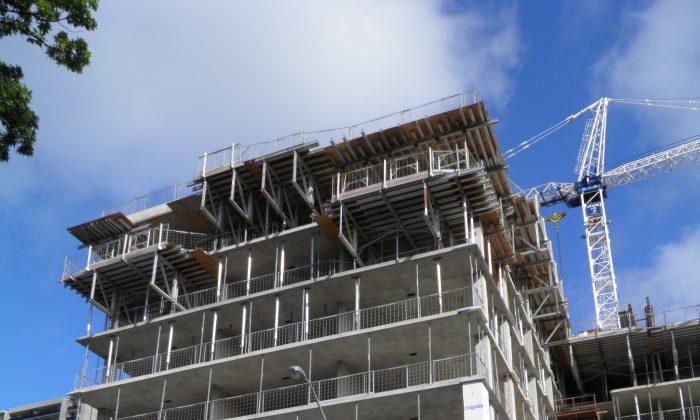OTTAWA—The pace of housing starts in Canada picked up slightly in September as work began on more multiple-unit dwellings including condominiums, Canada Mortgage and Housing Corp. said Oct. 8.
CHMC said there were 17,343 actual starts in September. Extrapolated over 12 months, that produced a seasonally adjusted annual rate of 197,343 starts, up from 196,283 in August.
Economists had expected the annual pace to come in at 196,100 on a seasonally adjusted basis, according to Thomson Reuters.
CMHC’s six-month moving average increased to 197,747 units in September compared with 191,095 in August.
“The increase in the trend reflects stronger starts activity since April, largely concentrated in multi-unit dwellings including condominiums,” CMHC chief economist Bob Dugan said in a statement.
“However, the currently elevated level of condominium units under construction supports our view that condominium starts should trend lower over the coming months.”
The housing starts data followed an Oct. 7 report by Statistics Canada that the value of building permits issued by municipalities plunged 27.3 percent in August, far more than the 12.5 percent drop that economists had expected, according to Thomson Reuters.
BMO Capital Markets senior economist Robert Kavcic noted that Canadian housing starts appear to have hit a ceiling at the 200,000 level.
“This will let policymakers breathe easier, and suggests that overall building activity in Canada remains within the range required to satisfy demographic demand,” Kavcic wrote in a note to clients.
However, he noted that there are plenty of regional differences.
Kavcic noted Alberta remains hot, while Manitoba and Saskatchewan appear to be cooling and Atlantic Canada remains cool.
CMHC said the seasonally adjusted annual rate of urban starts in September decreased in British Columbia and Atlantic Canada and increased in Quebec, Ontario, and the Prairies.






Friends Read Free